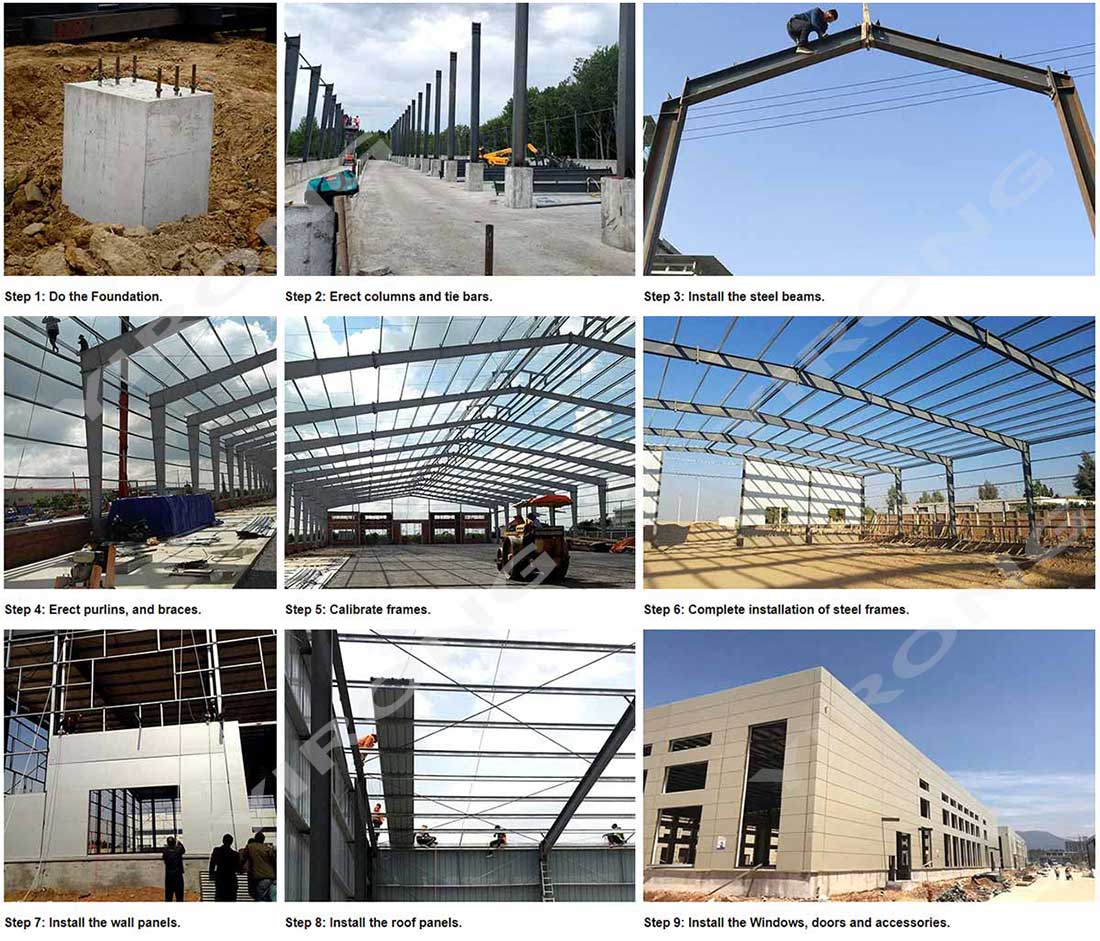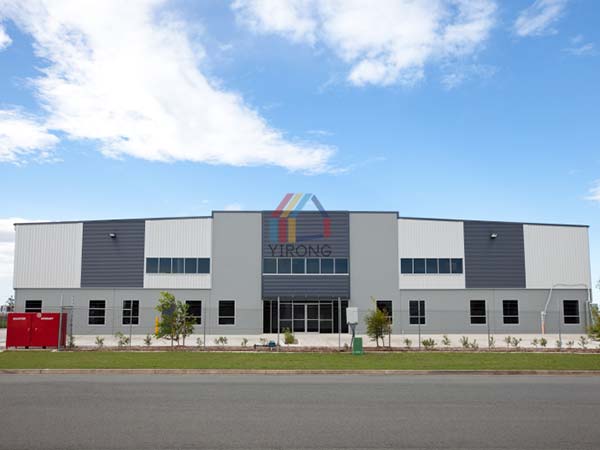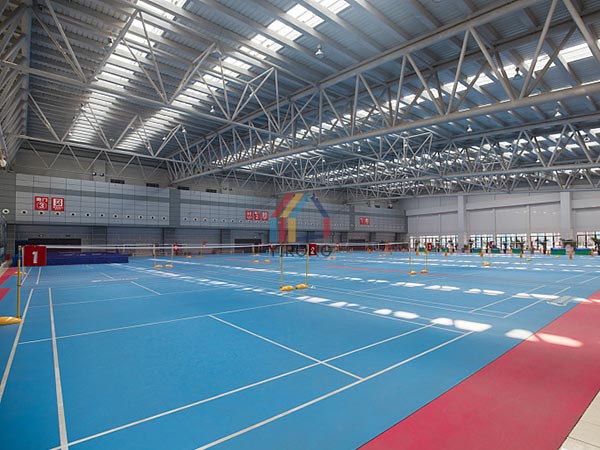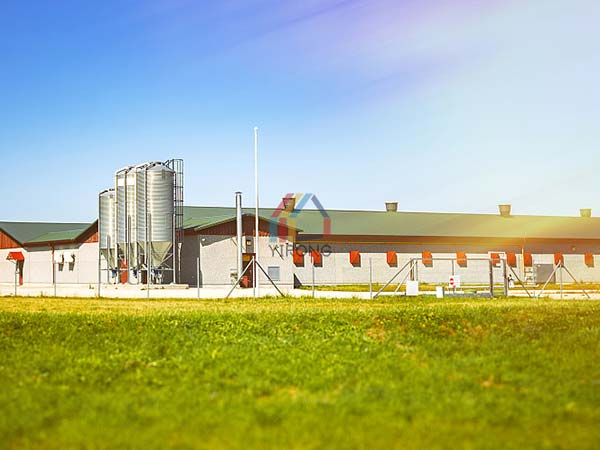Description
Factory steel buildings are pre-engineered structures designed specifically for manufacturing and industrial operations. Utilizing steel as the primary construction material, these buildings offer numerous advantages in terms of durability, flexibility, and efficiency. The main load-bearing components of steel structure factory buildings are composed of steel, including steel columns, steel beams, steel structure foundations, steel roof trusses (due to the large span of the factory buildings, steel structure roof trusses are now commonly used), steel roofs, etc. In addition, steel structure walls can also use brick walls or other materials as enclosure structures.

| Name | Steel Structure Factory Building Construction Large Span Easy Assemble | |
| Dimension | Length | H beam:400-1500mm |
| Thickness | web plate: 6-32mm wing plate: 6-40mm | |
| Height | 200-1200mm | |
| color | according to customers | |
| Main Components | base | cement and steel foundation bolts |
| Main frame | H beam | |
| Material | Q235B, Q355B or others as customer’s request | |
| Purlin | C or Z purlin,size from C120-C320,Z100-Z20 | |
| bracing | X-type or other type bracing made from angle,round pipe. | |
| bolt | plain bolt and high strength bolt | |
| Roof&wall | sandwich panel and color plate | |
| door | sliding or rolling door | |
| Window | Aluminium alloy window | |
| surface | two ways of anti-rust painting or hot dip galvanized | |
| components | sheet | 0.5mm or 0.6mm galvanized sheet |
| Accessories | semi-transparent skyling belts, Ventilators,down pipe,galvanized gutter,etc. | |
Application of factory steel buildings
Factory steel buildings have a wide range of application fields, mainly including:
- Industry: such as manufacturing, logistics and warehousing, automobile repair and maintenance, painting and coating, electronic communication, pharmaceutical production, etc.
- Business: such as shopping centers, supermarkets, exhibition venues, etc.
- Agriculture: such as breeding, planting, processing, etc.
- Sports: such as sports venues.
- Transportation: such as airplane hangars.
Steel structure factory building is not only suitable for single story large-span buildings, but can also be used to construct multi story or high-rise buildings.

| Usages | 1.workshop, warehouse, plants. 2. steel web frame structure 3. steel H-colum and sheet H-beam 4. Portal frame products 5. high rise building project 6. other steel structure buildings. |
| Packing | Main sheet frame without packing load in 40’OT |
| Drawing | according to drawings or according to customer’s requirements. |
| Design | If you need design for you, please supply us the following phareters and other detailed size: 1) length,wideth,height,eave height,roof pitch etc. 2) wind load,snow load,raining condition,aseismatic requirments,etc. 3) demand for doors and windows. 4) other information if necessory |
Characteristics of factory steel buildings
- The characteristics of steel structure factory buildings are mainly reflected in the following aspects:
- Light weight and high strength: Factory steel buildings have a light weight but high strength, and can withstand large loads.
- Short construction period: All components are prefabricated in the factory, and only simple assembly is required on site, greatly shortening the construction period.
- High heat resistance and good sealing: Steel structures have good heat resistance and good sealing performance, making them less prone to leakage.
- Convenient to move: Steel structure buildings are easy to dismantle and reassemble, making them convenient for relocation and reuse.
- Strong plasticity and toughness: Steel has good plasticity and toughness, and can withstand large deformations without damage.
- Weldability: Steel has good weldability, making it easy to manufacture structures with various complex shapes.
Materials of factory steel building

Advantages of factory steel buildings
The advantages of steel structure factory building mainly include:
- Seismic and wind resistance: Due to the high strength and good toughness of steel, steel structure factory has good seismic and wind resistance capabilities.
- Durable: Steel structure buildings have a long service life and are easy to maintain, with lower maintenance costs in the later stages.
- Reasonable cost: Steel structure buildings have a light weight, reducing foundation costs, and are built quickly, which can be completed and put into operation as soon as possible. The comprehensive economic benefits are better than those of concrete structure buildings.
- Beautiful and simple: The steel structure has smooth lines, diverse color choices, and high artistic beauty.
- Thermal insulation and sound insulation: Efficient thermal insulation and sound insulation materials are used, and steel structure factories have good thermal insulation and sound insulation effects.
- Environmental protection and health: The materials used in steel structure buildings can be 100% recycled, which is in line with current environmental awareness and beneficial for protecting the ecological environment.
Steel Structure Factory Building Installation

Considerations
- Local Regulations: It’s essential to adhere to local zoning laws and building codes, which can affect design, construction, and operational aspects of the factory.
- Foundation Requirements: A strong foundation is necessary to support the weight of the building and the machinery it houses, requiring careful planning and engineering.
- Acoustic and Thermal Insulation: Proper insulation is crucial to maintain comfortable working conditions and minimize noise, especially in manufacturing settings.
- Maintenance: While steel is low-maintenance, it’s still important to conduct regular inspections and upkeep of roofing, structural connections, and finishes.
- Future Expansion: When designing the building, it’s wise to consider potential future expansion needs to avoid costly renovations later.










